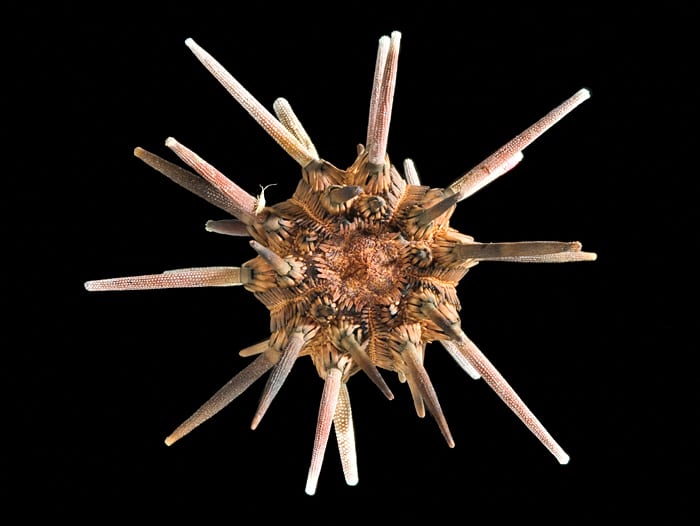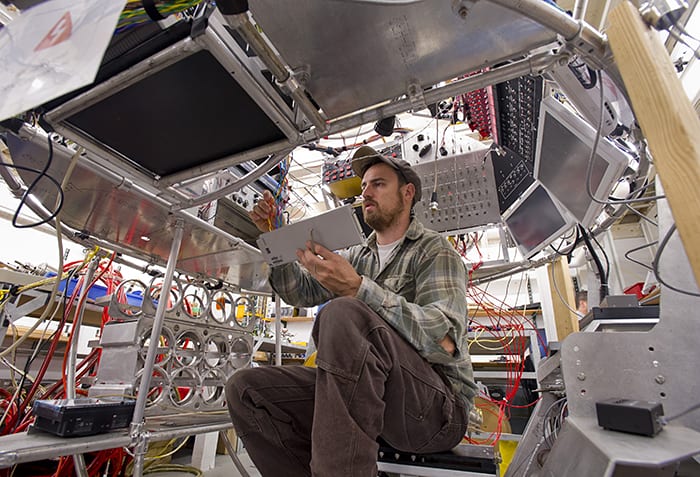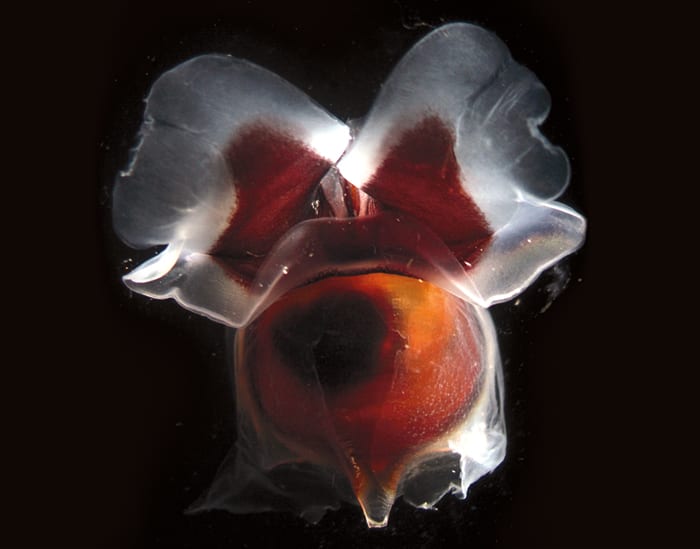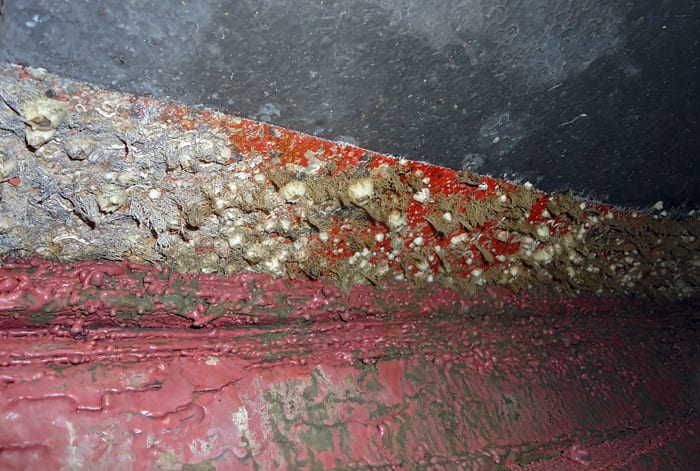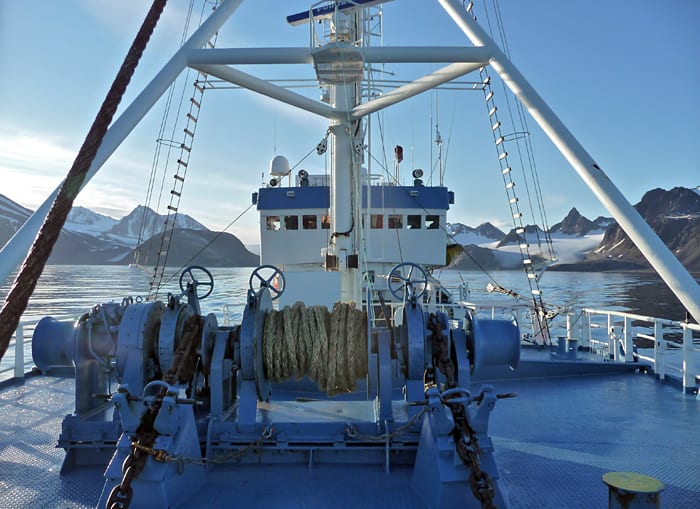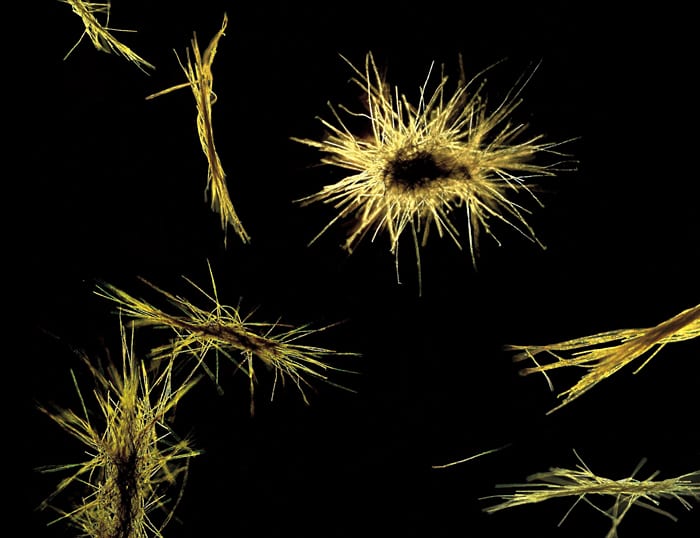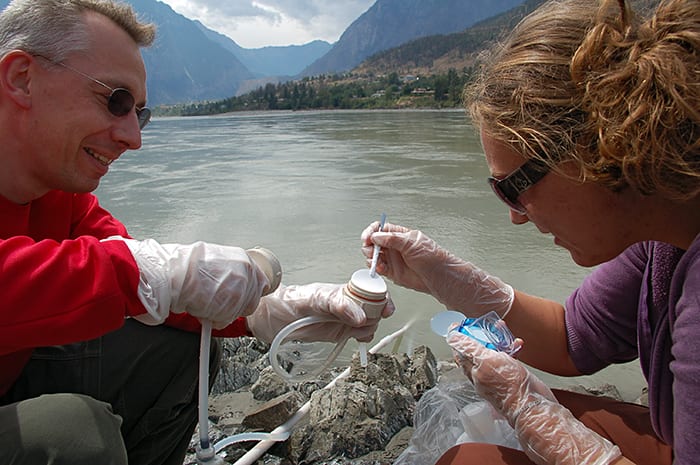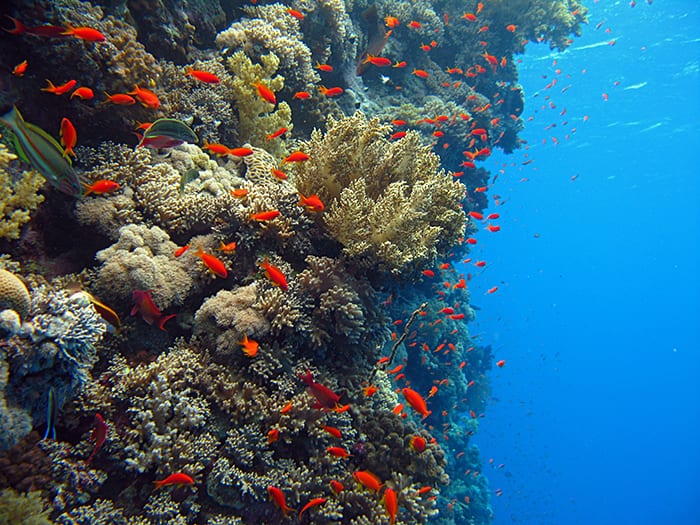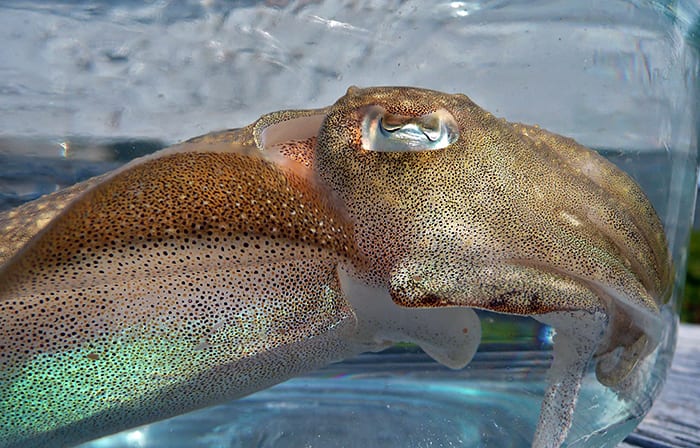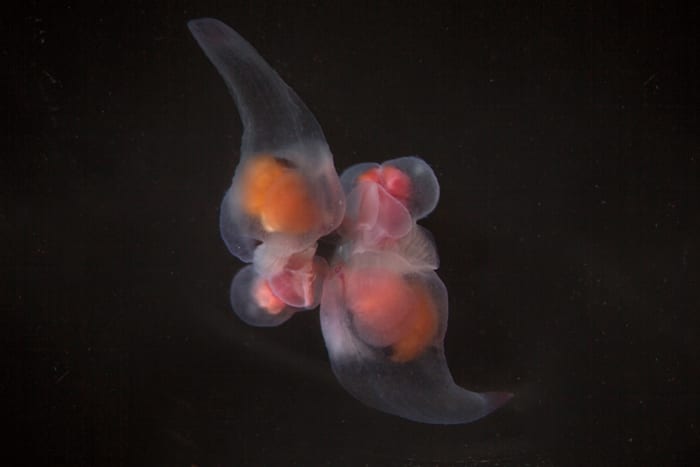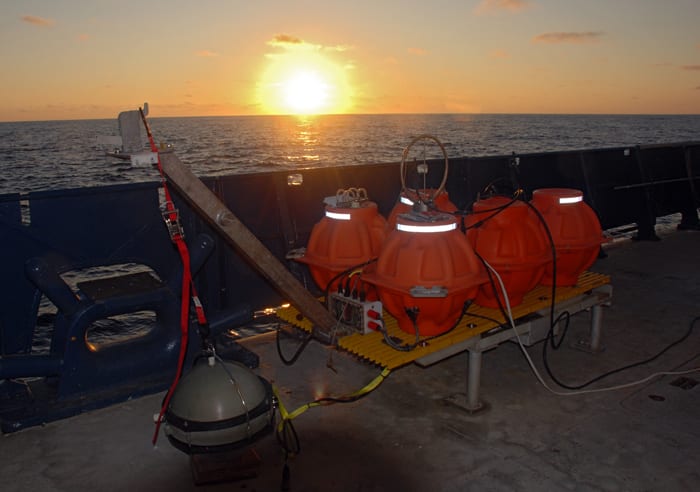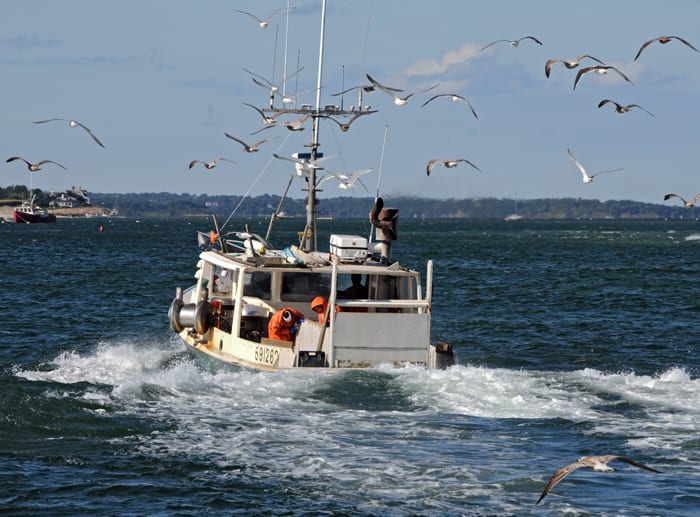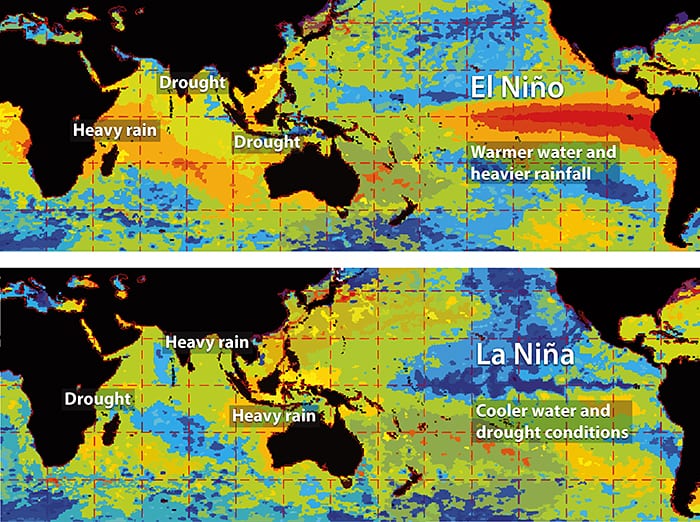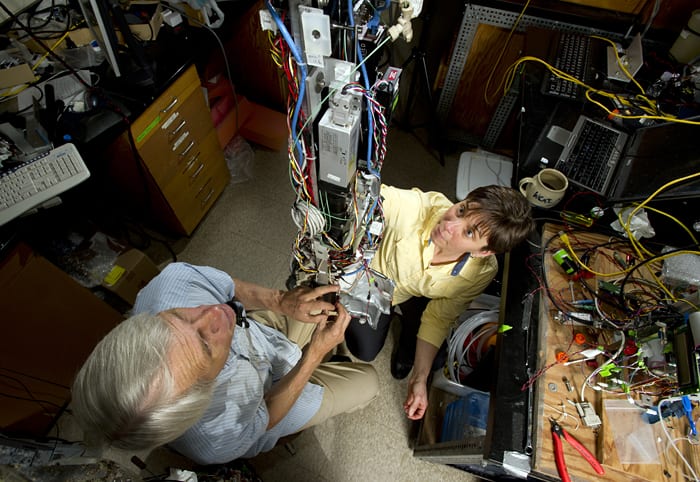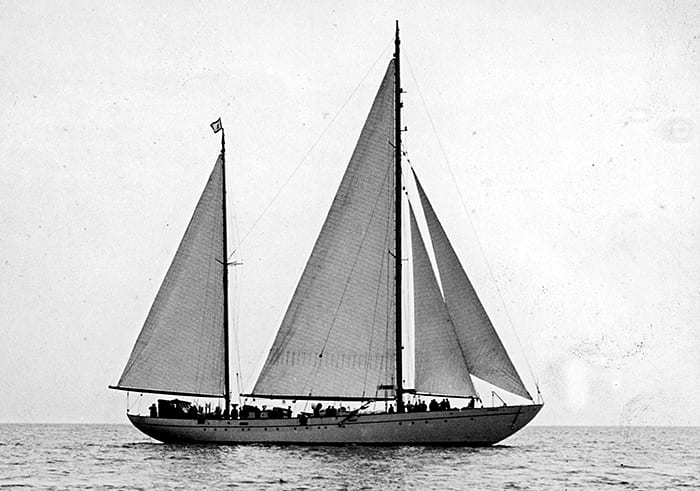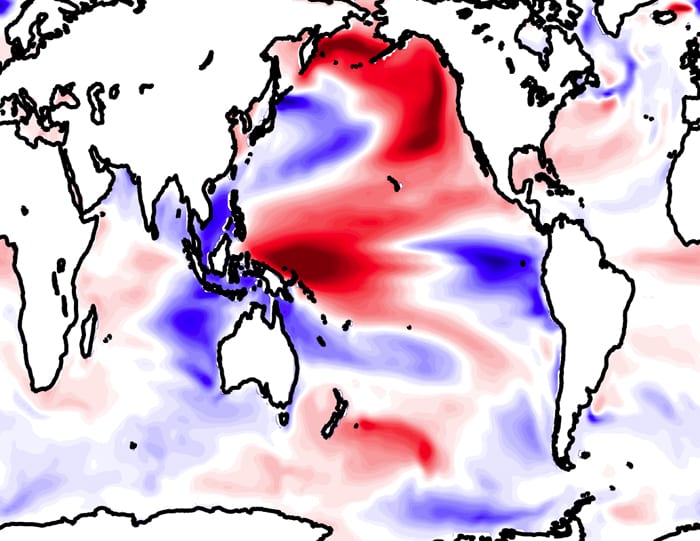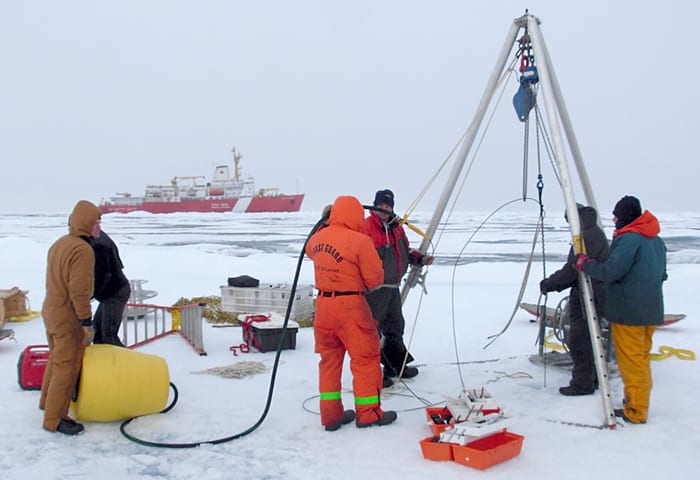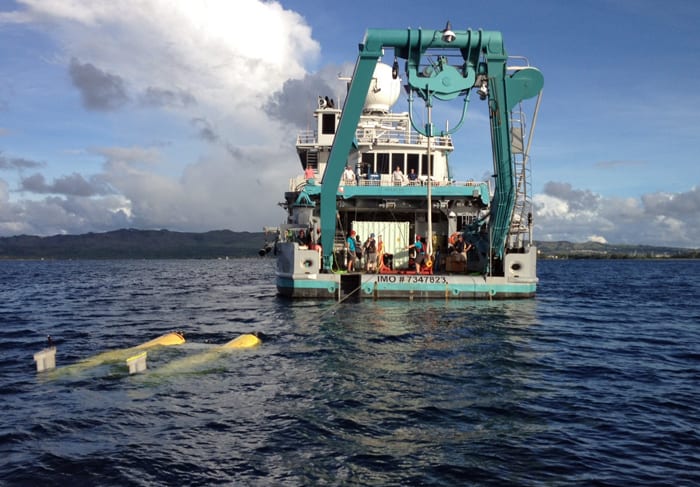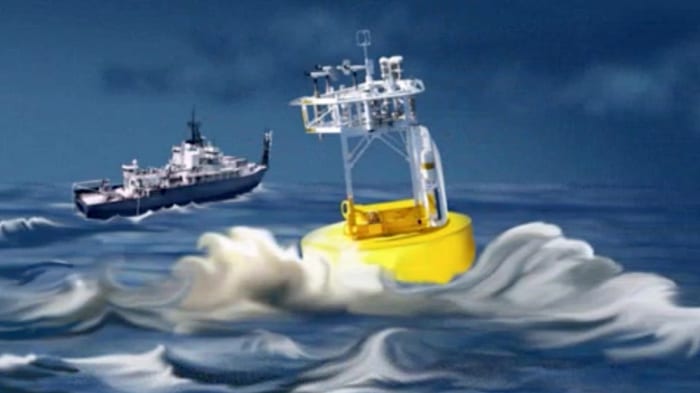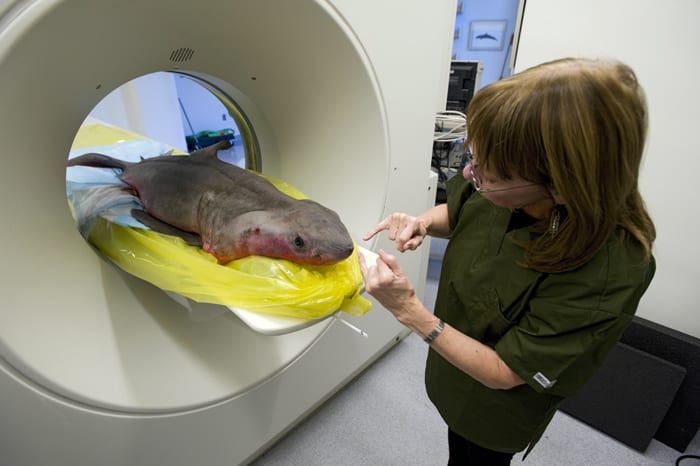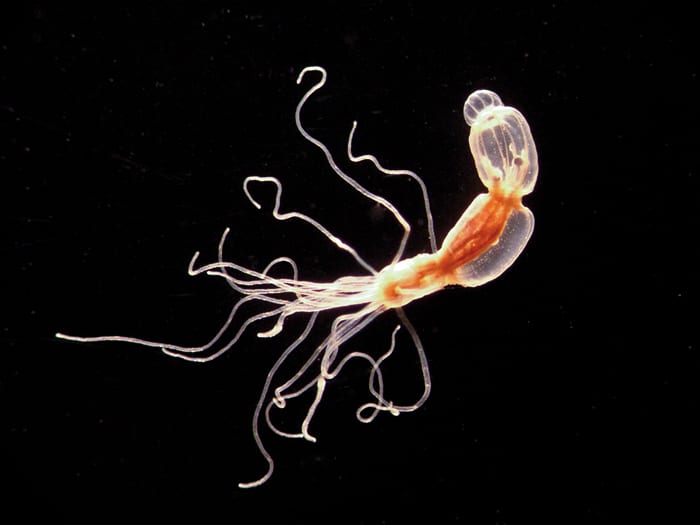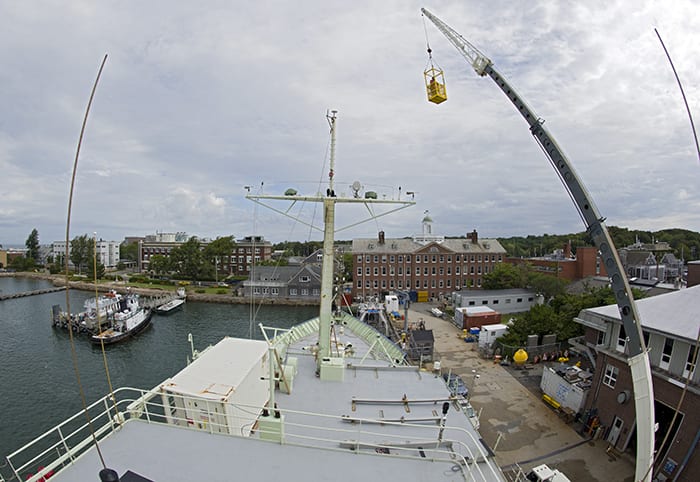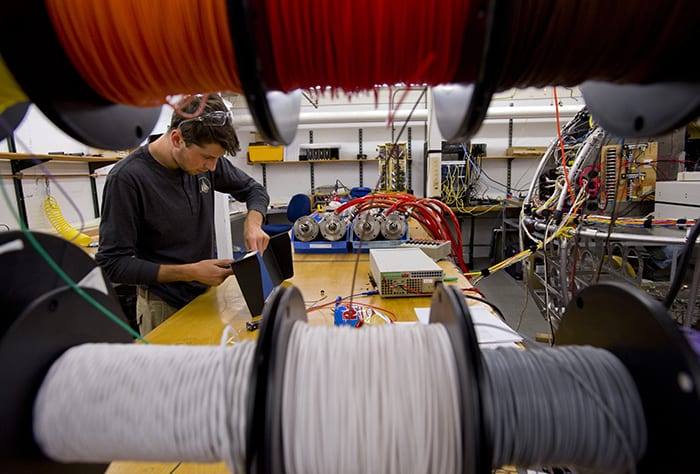Multimedia Items
Stalwart Survivor
The golf-ball-size slate pencil urchin, Eucidaris tribuloides, belongs to the only group of sea urchins known to have survived the Permian-Triassic extinction that occurred about 252 million years ago. Only…
Read MoreInside Alvin
In late October, WHOI engineer and Alvin pilot Sean Kelley prepared wiring that will eventually be moved inside the submersible’s personnel sphere. His work was in advance of a full…
Read MoreBrown Butterfly
The half-inch-long Cavolinia uncinata swims by flapping two wing-like extensions that give the group of planktonic snails formally known as pteropods its unofficial name of “sea butterflies”. Scientists on a…
Read MoreSailors’ Bane
Barnacles and other organisms cling to the hull of R/V Knorr. Such “biofouling” greatly increases frictional drag on ships, costing ship owners millions of dollars a year in added fuel…
Read MoreA First Time for Everything
The R/V Lance is an old sealing vessel that was converted by the Norwegian Polar Institute to support oceanographic research. Its design requires moorings to be deployed off the ship’s…
Read MorePrickly Plankton
Species of the single-celled phytoplankton Trichodesmium form colonies with distinctive shapes. Individual colonies, shown here, are visible to the naked eye. Where currents and winds gather many colonies together, aggregations…
Read MoreSampling the World’s Rivers
WHOI geochemist Bernhard Peucker-Ehrenbrink and Britta Voss, MIT/WHOI Joint Program student, take water samples from the Fraser River in British Columbia. Peucker-Ehrenbrink and scientist Max Holmes from the Woods Hole…
Read MoreOn the Wall
A vertical wall of coral defines the outer edge of a coral reef in the Red Sea in this 2008 photo. Individual coral colonies on the wall compete for access…
Read MoreSensitive Creature
Meet the cuttlefish, marine master of disguise. It swims by jet propulsion, has eight arms, great vision, and W-shaped pupils. Cuttlefish, like their relatives octopus and squid, can quickly change…
Read MoreAmorous Angels
Two shell-less marine snails, captured with a plankton net, mate in a glass dish. These half-inch-long animals are swimming snails called pteropods that live in open ocean waters. This species,…
Read MoreA Harvest of Seismometers
Like a sleigh full of pumpkins, an instrument composed of five ocean bottom seismometers (OBS) in orange housings and a broadband seismometer (gray ) rests on deck after on year…
Read MoreFloating Snack Bar
Trailed by gulls hoping for a quick snack, the fishing boat Decisive heads for harbor at Chatham, Mass. Scientists at WHOI’s Marine Policy Center and Woods Hole Sea Grant are…
Read MorePearl Harbor Remembrance Day
R/V Knorr doesn’t often sail to the Pacific Ocean, but when it does, it’s memorable. At the tail end of a 2009 expedition to deploy a series of Argo floats…
Read MoreCurrent Knowledge
The El Niño-Southern Oscillation (ENSO) is a natural cycle that recurs over two to seven year periods. When surface temperatures in the eastern equatorial Pacific are warmer than usual (El…
Read MoreMicroscopic Vision
WHOI biologists Robert Olson and Heidi Sosik created the Imaging FlowCytobot, which photographs, identifies, and counts plankton cells in the ocean 24 hours a day for months at a time…
Read MoreThe First Atlantis
Atlantis, the first ship used at WHOI for multidisciplinary ocean research, departed for sea trials after it was built in 1931. The 142-foot, ketch-rigged Atlantis retired from service to the U.S. oceanographic…
Read MoreA New Pattern Emerges
Regular changes in sea-surface temperature in the Pacific Ocean, such as , such as El Niño and La Niña, influence precipitation and storms over a wide swath of the globe.…
Read MoreIcy Outpost
Researchers from WHOI and crew from the Canadian icebreaker Louis S. St. Laurent prepare to deploy an ice-tethered micro-mooring (ITM) on a large ice floe in the Canada Basin in…
Read MoreGame Changer
In October, WHOI engineers working in Guam made a major breakthrough in remote vehicle technology. Using the hybrid remotely operated vehicle (HROV) Nereus equipped with an optical modem, a team…
Read MoreASIMET animation
(Animation by Jack Cook, Woods Hole Oceanographic Institution) By Hugh Powell, Jack Cook :: Originally published online March 30, 2007
Read MoreBeneath Shark Skin
This fall, a fisherman in California caught this four foot-long great white shark and brought it to the Monterey Bay Aquarium, where it died a short time later. The six…
Read MoreElegant Anemone
The half-inch-long starlet anemone, Nematostella vectensis, is a relative of reef-building corals. It lives in salt marshes along the east coast from Canada to Georgia, is easy to grow in…
Read MoreHigh Wire Work
Electrician Paul Roy, a contractor for WHOI, works via a basket suspended on a crane to adjust a search light mounted on the forward mast of the research vessel Knorr.…
Read MoreA Promising Career
Drew Smith, a junior at the Massachusetts Maritime Academy, is spending the fall semester with the Alvin group at WHOI working on several electrical components used on the submersible during…
Read More
